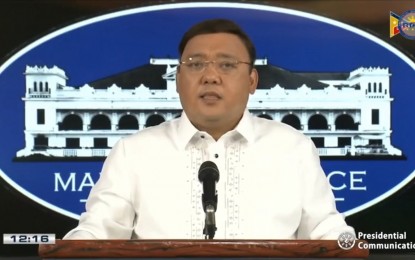
Presidential Spokesperson Harry Roque. (File photo)
MANILA – The Inter-Agency Task Force for the Management of Emerging Infectious Diseases (IATF-EID) has allowed basketball and football players to resume their training, Malacañang said on Friday.
During a Laging Handa briefing, Presidential Spokesperson Harry Roque said the IATF-EID, during its meeting on Thursday, approved the resumption of practice for the two team sports amid the coronavirus disease 2019 (Covid-19) outbreak.
“Pinayagan po ‘yung practice at conditioning ng basketball at saka ng football (The practice and conditioning of basketball and football players are now allowed),” Roque said.
He said the IATF-EID had given its approval following the request of the Philippine Basketball Association and football associations.
Roque noted that the Department of Health, the Philippine Sports Commission, and the Games and Amusement Board have crafted guidelines on the conduct of health-enhancing physical activities and sports during the Covid-19 pandemic.
The IATF-EID, he said, also approved the guidelines.
In May, the IATF-EID issued Resolution 38, allowing the resumption of non-contact sporting activities in areas under general community quarantine (GCQ).
Under IATF-EID Resolution 38, athletes and enthusiasts of running, biking, golf, swimming, tennis, badminton, equestrian, and skateboarding can now play the sports they love in places under GCQ.
They are, however, mandated to observe minimum public health standards, such as “wearing of masks and maintenance of physical distancing protocols.”
They are also advised to avoid the sharing of equipment.
The resolution also states that facilities that cater to non-contact sports can reopen but they will be limited to “basic operation.”
On the other hand, sporting events can resume in areas put under modified GCQ, provided that the capacity limit is only “50 percent.” (PNA)
